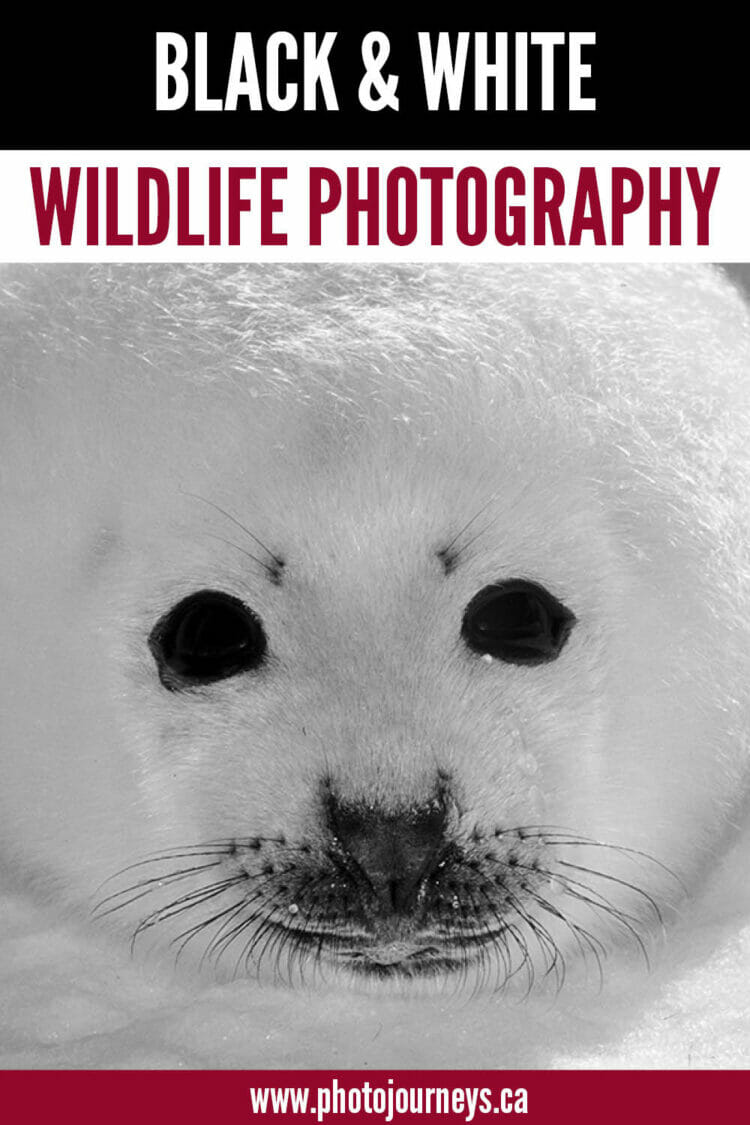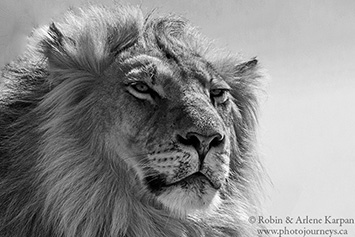
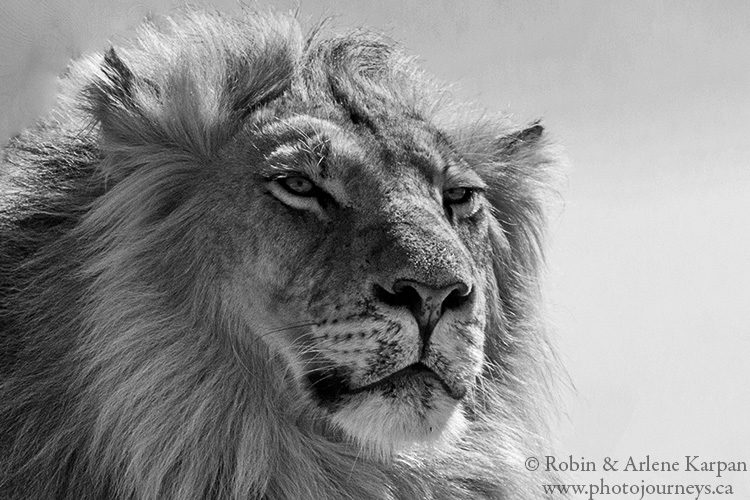
Black & white wildlife photography is making a big comeback, although monochrome aficionados will argue that it never went away. Many photographers are rediscovering black & white’s timeless and classical look, which has the ability to portray more emotion through forms, tones, and bold compositions.
Colour is often an essential part of the story of an image, such as an elk against the vibrance of fall colours. But this isn’t always the case. Sometimes the photo is about the animal in its environment, but sometimes it’s more about the animal itself, and the setting is incidental. Take away colour and your eye is drawn to the detail and texture.
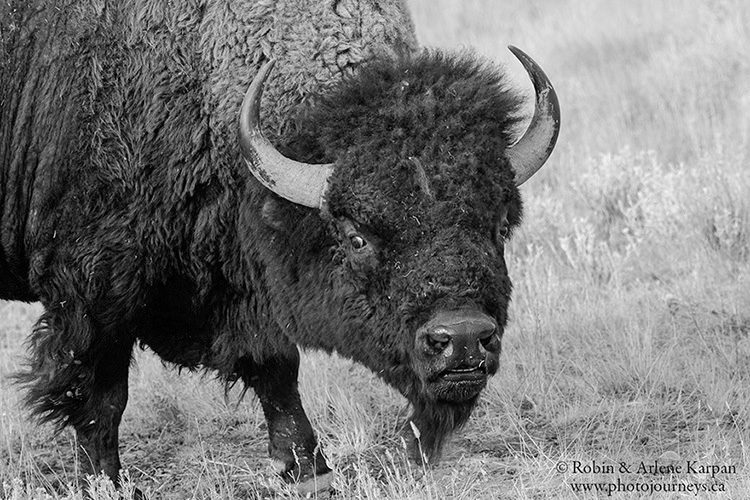
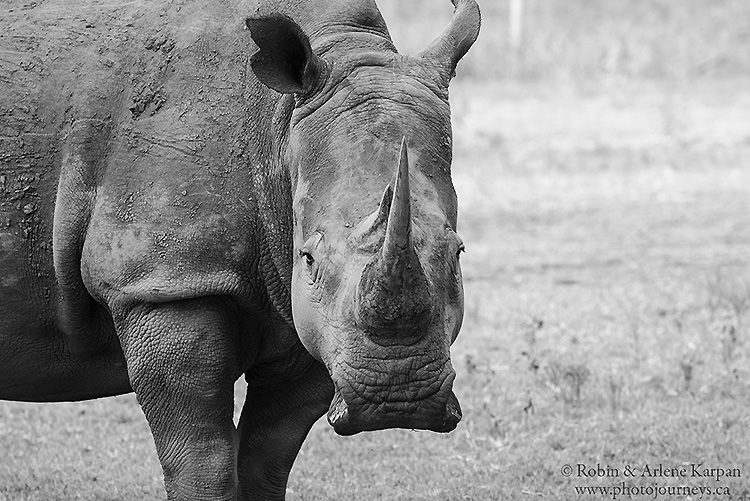
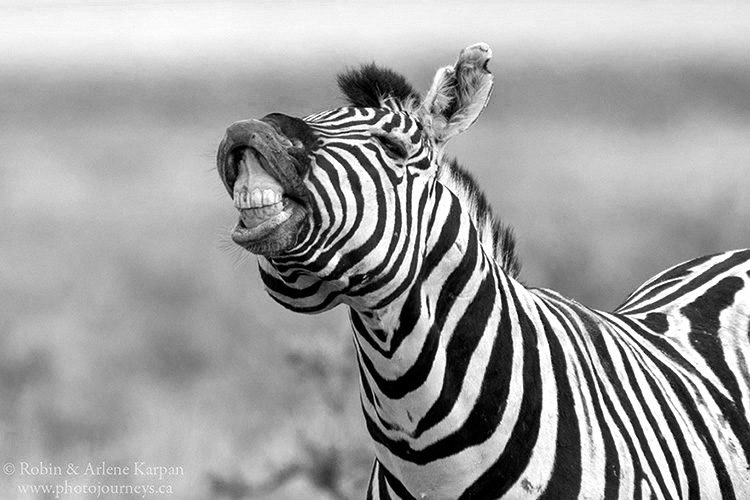
Choosing Your Subject
Some subjects work better than others for black & white. Big critters such as bison, lions, rhinos, and elephants are often the most popular, but practically any animal can make a great subject if conditions are right. Bird photography is more challenging in black & white, since the brilliant colours and subtle shades are often what makes birds so attractive for photography. Big powerful birds, such as eagles and hawks seem to work best in monochrome, since the shape of the bird is more important than subtle colour variations. Birds in flight often work well, especially when photographed against a clear sky free of distractions.
Composition
Composition is important in all photography, but especially so in black & white where the biggest issue is usually separating your subject from the background. A red fox will stand out against a backdrop of green foliage in a colour image, but when you convert to black & white, the tones may be similar enough that the image becomes mushy or flat. It’s best to have as simple a background as possible. It also helps to use a shallow depth of field in order to throw the background out of focus. If only your subject is in focus, it will stand out better.

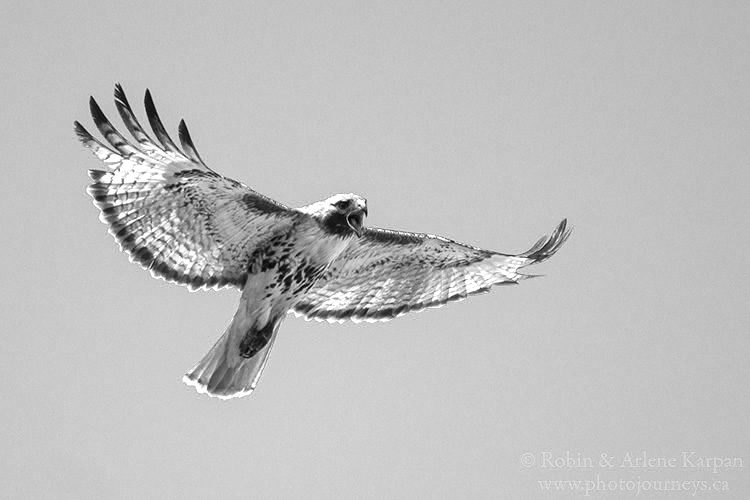
Gloomy, cloudy days aren’t always ideal for colour photography, but may well be fine for black & white because we’re more concerned with textures than colour. The harsh, overly contrasty light of midday is usually the worst time for colour photography. However, it is much less of an issue for black & white, where we often want images with strong contrast.
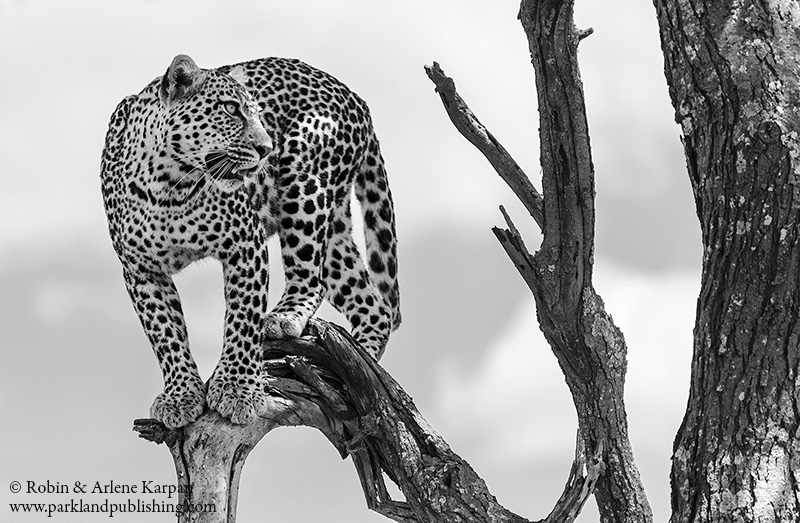
Sometimes a photo can be improved when converted to black & white. The leopard image, for example, was okay in colour, but lacking in impact. The light was muted and the colour of the background sky rather drab. In other words, colour didn’t seem to add much to the image. By taking away the colour, the image was simplified to concentrate on the shape and tones of the leopard and the tree.
Another way to deal with distracting backgrounds is get in close and crop out the background. Some of our favourite black & white wildlife images are frame-filling portraits. This not only solves the background issue but can increase the impact of the image as well.

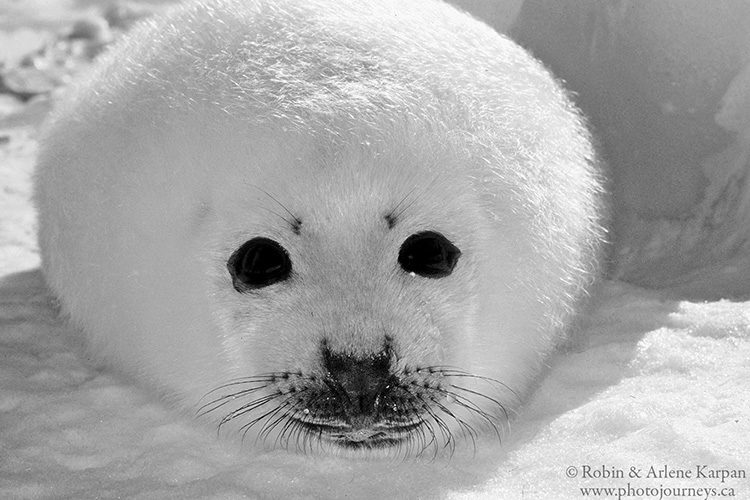
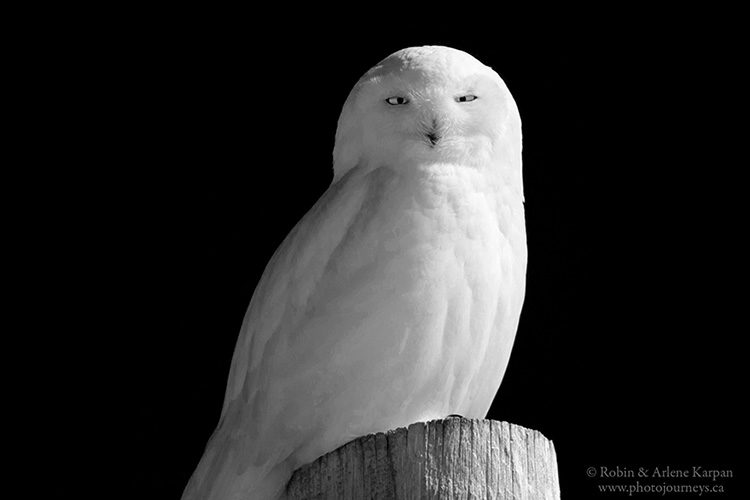
Converting to Black & White
One of the biggest factors in the resurgence of black & white is that it is no longer an either/or choice when deciding between colour and monochrome. Back in the film days, you had to decide whether to load your camera with colour or black & white film. But with today’s digital cameras, especially those capable of shooting RAW, you can essentially shoot both at the same time.
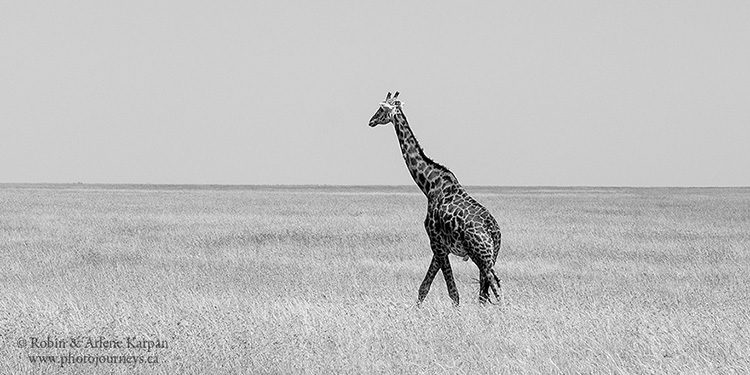
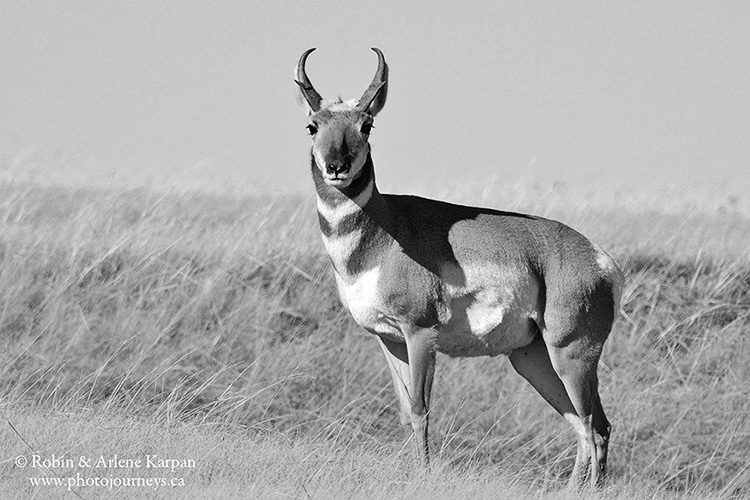
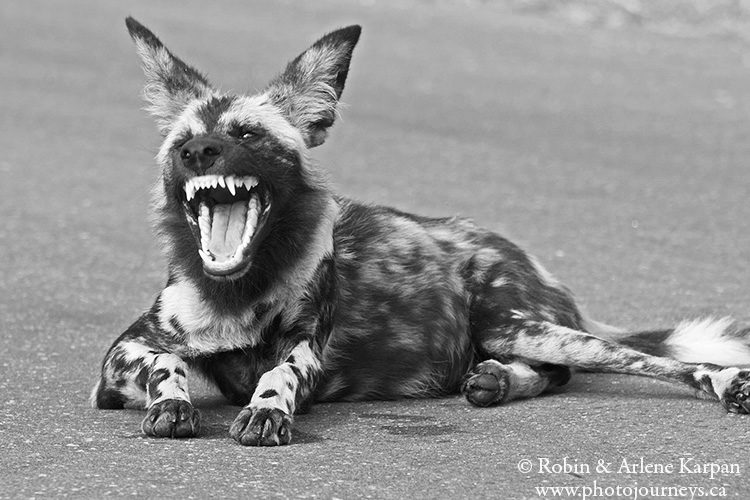
Some photographers who specialize in black & white set their cameras to capture monochrome images. But the more common method is to take photos in colour then convert to black & white using Photoshop or other software. Photoshop will provide a “default” monochrome image when you convert. This may or may not be the best option, but it’s usually a good starting point. It’s always best, plus a lot of fun, to play around with the other colour filters that change the tone of the black & white image. The differences can be quite dramatic, and this is where you can make adjustments to help the subject stand out from the background, or create the mood you want – soft and subtle, bold and contrasty, dark and moody. There is no right and wrong result. The “correct” image is the one that gives the look that you like best.
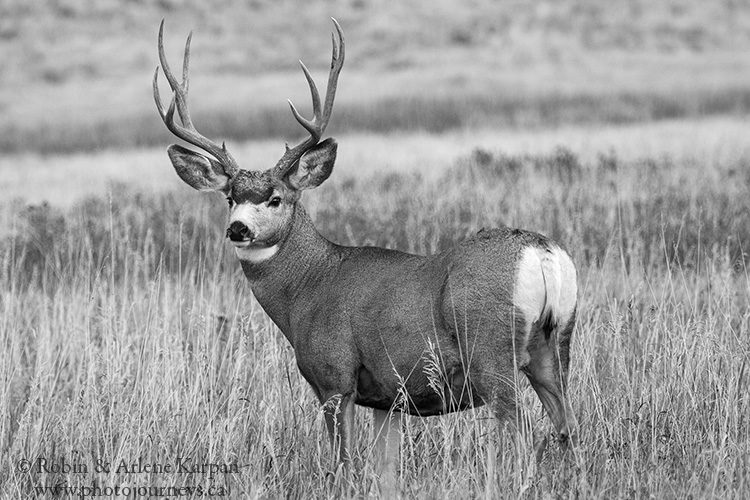
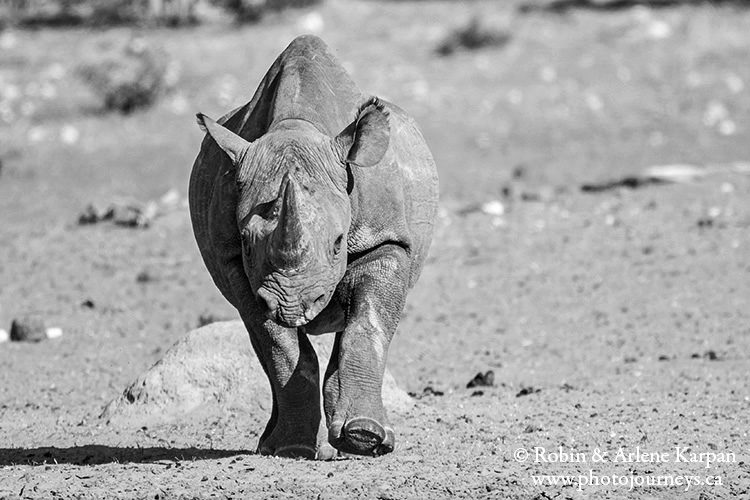
Feel free to PIN this article
